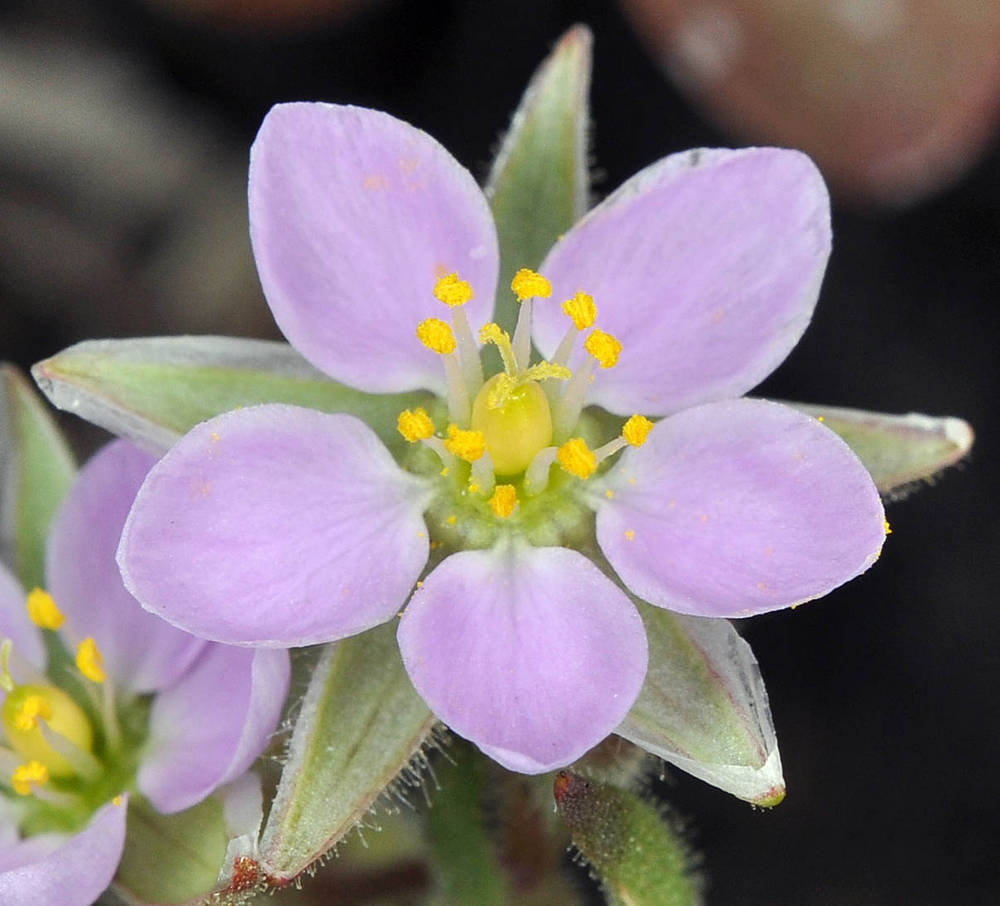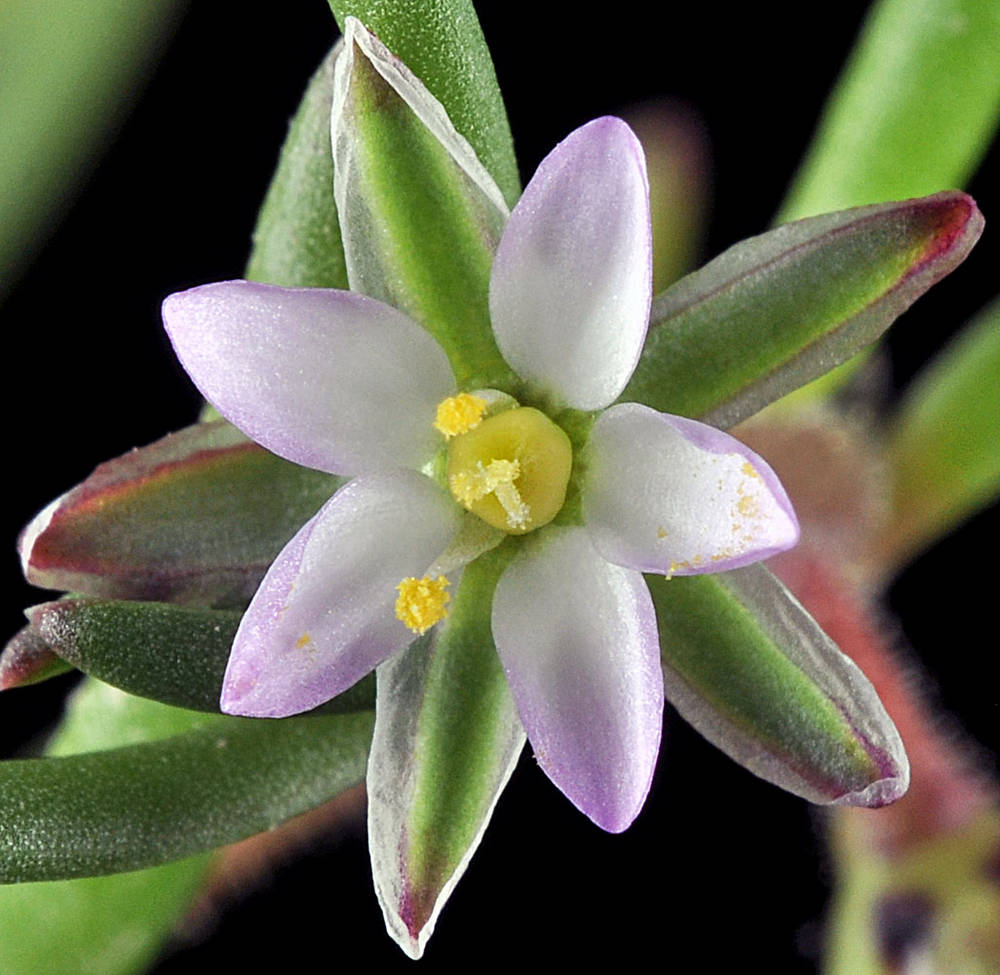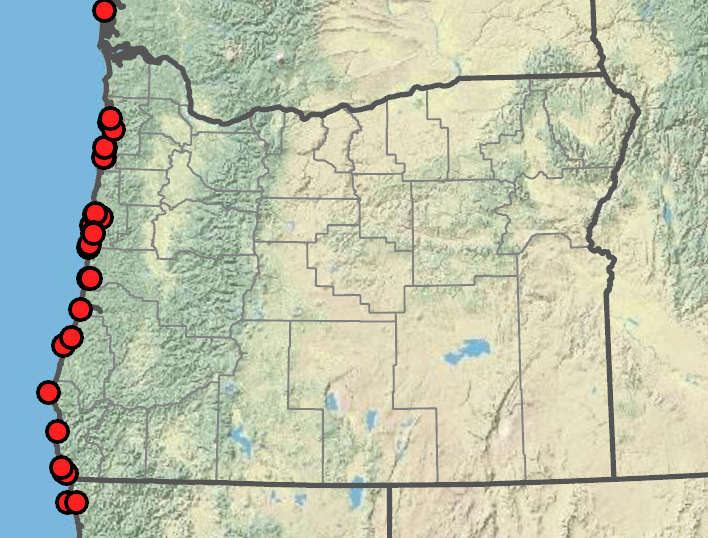Spergularia macrotheca
Spergularia
beach sand-spurrey, sticky sand-spurrey
sand-spurrey
erect to sprawling.
opposite; axillary clusters often present, 2–4+ per node; thread-like to linear;
petioles 0;
stipules 2 per node, lanceolate to broadly triangular, not partially fused to leaf bases, scarious.
terminal cymes or flowers solitary and axillary;
flowers few to many;
bracts present.
bisexual;
sepals 5, basally united 20% of their length, glabrous to glandular-hairy;
spurs 0;
petals 5; entire;
stamens 2–10, arising on hypanthium rim;
staminodes 0;
styles and stigmas 3.
capsules, opening by 3 spreading valves.
30–150+; spherical to angular, 0.4–1.1 mm, brown, red-brown, or black; smooth, sculptured, papillate or not, often winged.
Spergularia macrotheca
Spergularia
Central America, Mediterranean region, western North America, South America. ~60 species; 5 species treated in Flora.
Reports of two species of Spergularia from Oregon are based on collections from ballast near Portland between 1902 and 1916. Spergularia bocconi is most similar to S. rubra and is distinguished by having moderately fleshy leaves, dull, white to tan, deltate, somewhat inconspicuous stipules, and light brown seeds. Spergularia villosa is a woody-based perennial similar to S. macrotheca, differing in having shorter sepals and styles and smaller seeds. A third species, Spergularia media, was collected from ballast in 1902, and Rossbach (1940) cited a specimen (Nelson 2355, GH) from a salt marsh near Toledo in 1918. It would also key near S. rubra but has fleshy leaves and larger (0.8–1.1 mm) seeds, which are smooth and usually winged. Each of the species is known from California and might be expected to reappear in saline areas of Oregon.
Rich Rabeler, Ronald Hartman
- Local floras:
BC,
CA,
OR,
WA
- Local Web sites:
CalFlora,
CalPhotos,
Flora NW,
PNW Herbaria,
Turner Photog.
WildflowerSearch
iNaturalist (observations)
USDA Plants Database
- LBJ Wildflower Center
- SEINet
- Plants of the World Online
- Encyclopedia of Life
- Wikipedia
- Google Image Search




